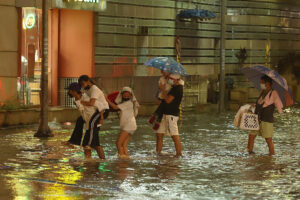A RESOLUTION seeking a probe into the government’s flood control master plan and pending projects has been filed at the Senate following recent flooding in the capital city and other parts of the country due to incessant rains or thunderstorms.
Senator Ramon B. Revilla, Jr., who filed Senate Resolution 52 on July 18, said “it is important for us to be prompt and make sure the town is ready before disasters strike.”
“The commuting public have been laden with this decades-old issue. It is high time we look into this before it is too late,” he said in a statement on Tuesday.
The Department of Public Works and Highways (DPWH) is the lead implementing agency for the Flood Management Master Plan for Metro Manila and Surrounding Areas Project, in close coordination with local government units.
DPWH has reported the completion of 13,224 flood control structures nationwide in the last six years, while the Metro Manila Development Authority (MMDA) has said that pumping stations in the National Capital Region are prepared and are at 100% capacity for the rainy season.
However, Mr. Revilla said that despite the master plan and billions allocated for the program, flooding and its adverse effects continue to endanger many communities nationwide.
The senator said that issues with flooding have only become worse over the years, citing climate change which has intensified natural calamities.
“The country has repeatedly witnessed catastrophic flooding of communities,” Mr. Revilla said. “We cannot simply forget the unthinkable number of lives lost, complete devastation of areas directly affected, and the severe effects on living conditions and livelihood which led to a long-term negative impact on the health of many Filipinos and on the country’s economy.”
The Philippines, situated within the typhoon belt, is struck by an average of 20 typhoons per year.
It is losing an average of 1.7% of its overall economic output each year due to typhoons, according to estimates by the Asian Development Bank, which noted the country’s need to strengthen its resilience against natural disasters. — Alyssa Nicole O. Tan

